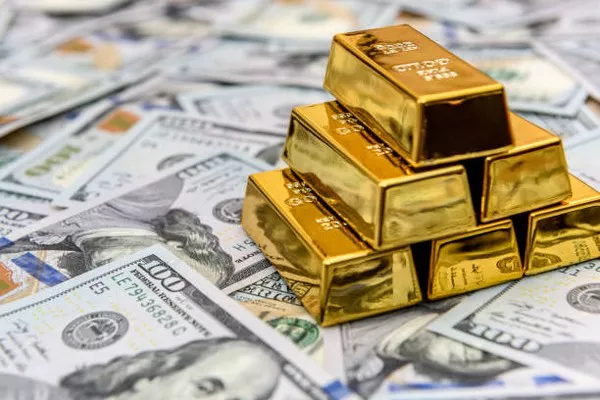Gold and silver have captured the imagination of humanity for millennia, serving as symbols of wealth, power, and beauty. These precious metals have played pivotal roles in shaping economies, cultures, and civilizations throughout history.
Historical Significance and Uses
Since ancient times, gold and silver have been prized for their rarity and intrinsic value. They have been used as currency, jewelry, and ornaments, as well as in religious ceremonies and artistic endeavors. Both metals have been central to monetary systems worldwide, backing currencies and serving as stores of value.
Physical and Chemical Properties
Gold and silver exhibit remarkable physical and chemical properties. Gold, with its distinctive yellow hue and malleability, is highly resistant to corrosion and tarnishing. Silver, known for its lustrous white appearance, is an excellent conductor of electricity and heat. These properties make them indispensable in various industrial applications, from electronics to medicine.
Geological Formation of Gold and Silver
How Gold and Silver Are Formed in Nature
Gold and silver are typically formed through a process known as hydrothermal deposition, where hot fluids carrying dissolved metals migrate through cracks and fissures in the Earth’s crust. As these fluids cool and precipitate, they deposit gold and silver along with other minerals, forming ore bodies.
Types of Deposits
Gold and silver deposits occur in various forms, including lode (or vein) deposits, placer deposits, and disseminated deposits. Lode deposits are primary sources of gold and silver, formed in quartz veins or other host rocks. Placer deposits, on the other hand, result from the erosion and concentration of gold and silver particles by water, often found in riverbeds and streambeds.
Global Distribution of Gold and Silver
Major Countries Where Gold and Silver Are Found
Gold and silver deposits are distributed worldwide, with significant concentrations in certain regions. Major gold-producing countries include China, Australia, Russia, the United States, and Canada. Silver is similarly abundant, with notable production coming from Mexico, Peru, China, Russia, and Australia.
Largest Mines and Their Production Statistics
Some of the world’s largest gold and silver mines contribute substantially to global production. Mines such as Grasberg in Indonesia, Muruntau in Uzbekistan, and Carlin Trend in the United States are renowned for their prolific output of gold. Silver mines like Fresnillo in Mexico, Cannington in Australia, and Polkowice-Sieroszowice in Poland are among the top producers of silver.
Mining Techniques for Gold and Silver
Traditional and Modern Mining Methods
Traditionally, gold and silver were extracted using techniques such as panning, sluicing, and hydraulic mining. However, modern mining operations employ sophisticated methods, including open-pit mining, underground mining, and heap leaching. These methods involve advanced machinery, chemicals, and processes to extract precious metals efficiently.
Environmental Impact and Sustainability
While gold and silver mining provide essential resources, they can also have significant environmental impacts. Mining activities may lead to deforestation, habitat destruction, water pollution, and soil erosion. Sustainable mining practices aim to mitigate these impacts by employing measures such as reclamation, waste management, and community engagement.
Economic Impact of Gold and Silver Mining
Role in the Global Economy
Gold and silver mining contribute substantially to the global economy, generating employment, revenue, and foreign exchange earnings. These industries support various sectors, including manufacturing, finance, and technology, driving economic growth and development.
Influence on Local Communities
Gold and silver mining can have profound effects on local communities, both positive and negative. While mining operations create jobs and infrastructure, they may also disrupt traditional livelihoods, cause social tensions, and impact indigenous populations. Responsible mining practices aim to address these challenges through sustainable development initiatives and community partnerships.
Investing in Gold and Silver
Market Trends and Investment Strategies
Investing in gold and silver has long been favored as a hedge against economic uncertainty and inflation. Market trends, including supply and demand dynamics, geopolitical factors, and monetary policies, influence investment strategies. Investors may choose to buy physical bullion, trade futures contracts, or invest in mining stocks and exchange-traded funds (ETFs) to gain exposure to precious metals.
Risks and Benefits of Precious Metal Investments
While gold and silver investments offer diversification and potential returns, they also entail risks. Price volatility, market speculation, and regulatory changes can affect investment performance. Additionally, storage costs, counterparty risks, and liquidity constraints should be considered when investing in precious metals.
Future of Gold and Silver Mining
Technological Advancements
Advancements in technology are shaping the future of gold and silver mining. Innovations in exploration techniques, ore processing, and environmental management are improving efficiency and sustainability. Automation, robotics, and artificial intelligence (AI) are revolutionizing mining operations, enhancing safety and productivity.
Predictions for Future Discoveries and Reserves
Despite centuries of mining activity, significant discoveries of gold and silver continue to be made. Geological surveys, exploration drilling, and remote sensing technologies are helping identify new mineral deposits. Predictions suggest that untapped reserves and resources of gold and silver may exist in unexplored regions, deep underground, and underwater.
See Also What Is The Best Month To Buy Gold? A Comprehensive Analysis
Conclusion
In conclusion, gold and silver hold enduring allure and significance in human history, economics, and culture. Understanding their geological formation, global distribution, mining techniques, economic impact, and investment opportunities is essential for stakeholders in the precious metals industry. By embracing responsible mining practices and sustainable investment strategies, we can ensure the continued prosperity and stewardship of these precious resources for future generations.


